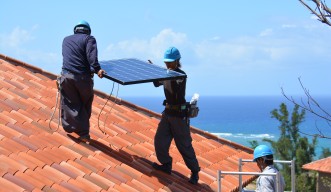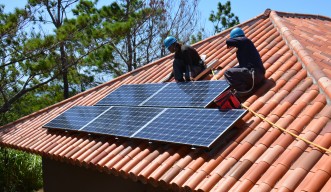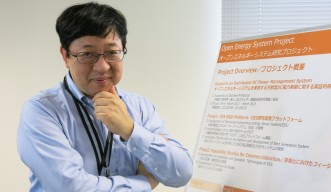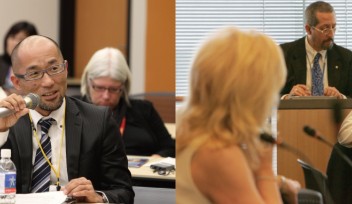New Energy System Opens Doors to Sustainable Future
In the months to come, OIST will become one of the first sites to implement an innovative sustainable energy system that promises to be considerably more viable and efficient compared to other systems to date. This will generate enough electricity for household use in the OIST Faculty Houses. This system, designed by Prof. Hiroaki Kitano of the OIST Open Biology Unit and by a team of researchers in Sony Computer Science Laboratories Inc., will come into practice with funding from the Okinawa Prefectural Government and in collaboration with the local contractor Okisokou and the Sony Group. In this initiative, called the Open Energy System (OES) Project, solar panels will be installed on the roofs of the OIST Faculty Houses. These panels will be connected to a newly developed ‘energy server’ that houses power management equipment and a new type of battery which will be placed in the utility room of each house. The final goal is to eventually connect the houses via direct current (DC) so that they create an intelligent and distributed power grid covering the entire Faculty Housing area.
Generating electricity from solar energy is nothing new. What is impressive about the Sony OES Project is the remarkable stability of energy supply relative to other solar power systems that are currently available. Preexisting solar energy systems were not a very reliable power source because the sun does not always shine when or where we want it to. Prof. Kitano’s system, on the other hand, provides a way around these limitations. The energy servers in each house will be connected by a DC microgrid structure. Since some houses may get more sunlight than others at any given time, connecting the units will allow energy to be distributed effectively among the housing units. This way, for instance, the energy produced at a vacant house could be used at another house with occupants. Also, the energy that is generated will be stored in the newly developed, special battery that Sony provides. With these batteries, the energy generated when it is sunny can be stored for use during prolonged cloudy weather.
The installation of solar panels in the Faculty Housing started in September for a trial run. In this round, the solar panels and energy servers will power one of the air conditioners in each house. After this is confirmed to be a resident friendly system, solar panels will be installed on more roofs, and the associated energy servers will then be connected by an underground microgrid structure. A collaboration office named the Center of OES Research has been set up at OIST to facilitate the research process. Here, the research team plans to analyze data collected from the experiment towards further development of the OES system.
Prof. Kitano and his team hope to apply this technology for isolated islands without electricity and to create basic energy infrastructures for developing regions around the world. “Climate change would push us into a critical situation if we keep burning oil and coal at this rate,” Prof. Kitano said. “For areas that are to develop from now, it’s much better to implement viable alternative energy infrastructures from the start instead of trying to follow the path developed countries took with regrets, both in terms of climate change and improving peoples’ lifestyles. Having a few more hours of light at night will create more time available for working and studying, and will eventually lead to economic independence.”
Research Unit
For press enquiries:
Press Inquiry Form

















